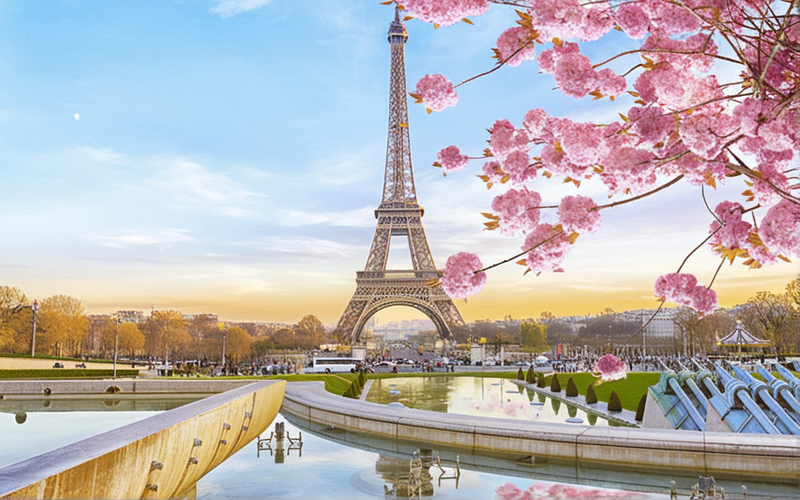Eiffel Tower: A Timeless Icon of Parisian Elegance and Architectural Genius
- Home
- Blog

Embark on a journey to the heart of Paris, where the Eiffel Tower gracefully dominates the skyline. This iconic landmark, synonymous with romance and sophistication, stands as a testament to the architectural brilliance of Gustave Eiffel and the enduring charm of the City of Light
Architectural Brilliance
Commissioned as the entrance arch for the 1889 World’s Fair, the Eiffel Tower was designed by the renowned French engineer Gustave Eiffel. The structure, crafted from iron lattice, reaches a height of 324 meters (1,063 feet) and held the title of the tallest man-made structure in the world until 1930.
Design and Layout
The Eiffel Tower’s lattice structure is a marvel of engineering, consisting of interconnected iron pieces assembled with precision. Divided into three observation decks, each offering panoramic views of Paris, the tower’s design exemplifies a harmonious blend of form and function.
The intricate ironwork of the Eiffel Tower, inspired by the principles of both Art Nouveau and Structural Expressionism, creates a mesmerizing interplay of light and shadows, especially during the golden hours.
Construction and Engineering Feats
Constructed between 1887 and 1889, the Eiffel Tower’s assembly involved over 18,000 individual iron parts, each precisely manufactured. The construction process showcased Gustave Eiffel’s innovative engineering techniques, including the use of hydraulic jacks and a railway system for transporting materials to the construction site.
Despite initial controversies, the Eiffel Tower’s structural integrity and aesthetic appeal have solidified its status as a global architectural icon.
Cultural Significance
Beyond its architectural magnificence, the Eiffel Tower holds immense cultural significance. A symbol of French pride and a testament to human achievement, the tower attracts millions of visitors annually. It has become a backdrop for countless romantic moments and a recognizable icon of France worldwide.
Designated a UNESCO World Heritage Site, the Eiffel Tower continues to inspire artists, architects, and admirers from around the globe. Its silhouette against the Parisian skyline evokes a sense of wonder and admiration.
Conclusion:
The Eiffel Tower stands not just as a monument of steel and iron but as a symbol of human imagination and engineering prowess. As we gaze upon its intricate lattice and ascend its observation decks, we’re reminded of Gustave Eiffel’s visionary brilliance and the enduring elegance that defines Paris.
A visit to the Eiffel Tower is not just a journey to a historic landmark; it’s a pilgrimage to a symbol of architectural excellence that has stood the test of time, inviting us to witness the magic of Paris from new heights.

